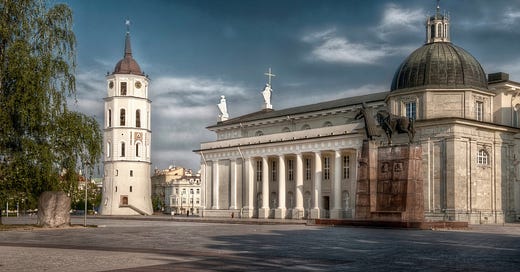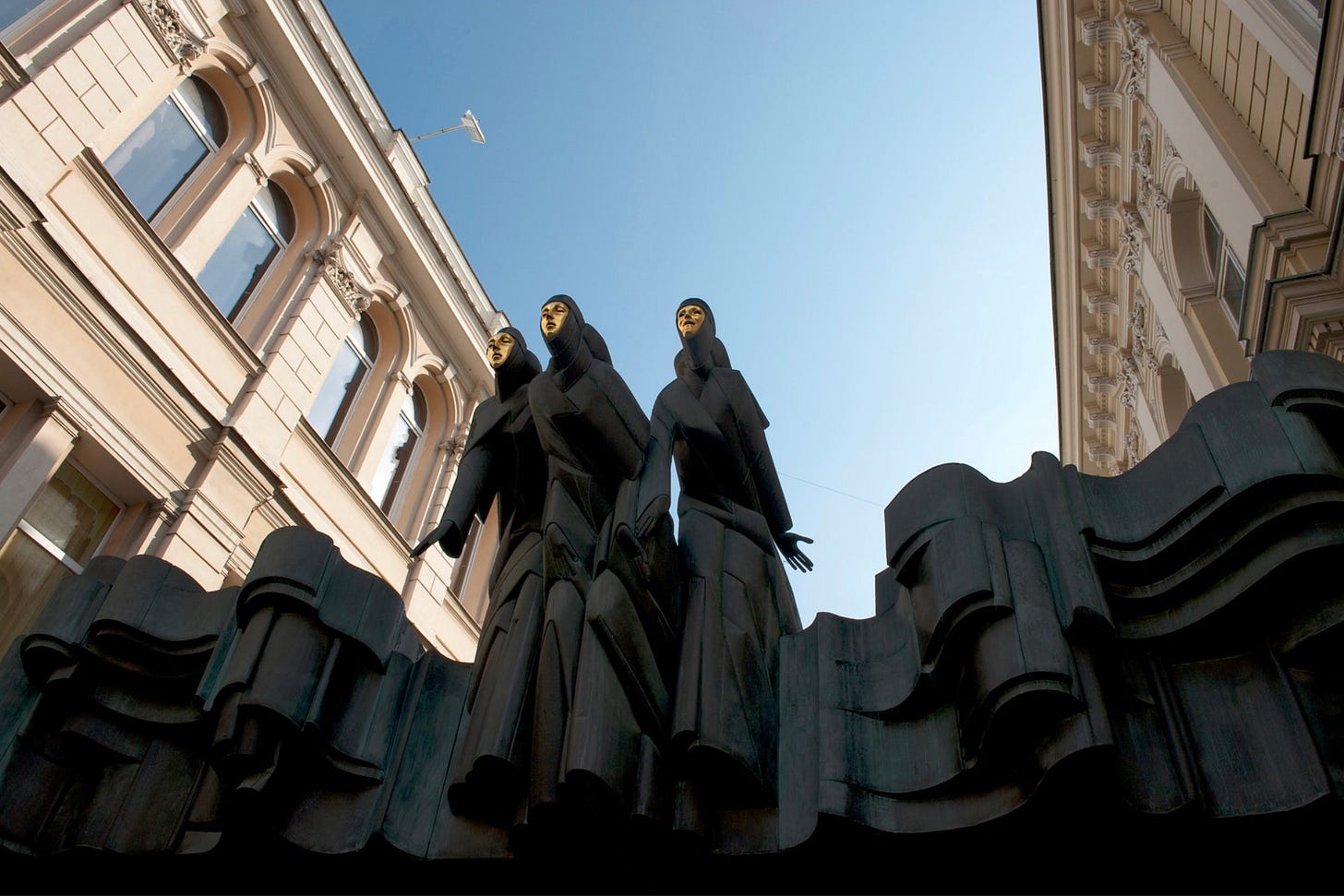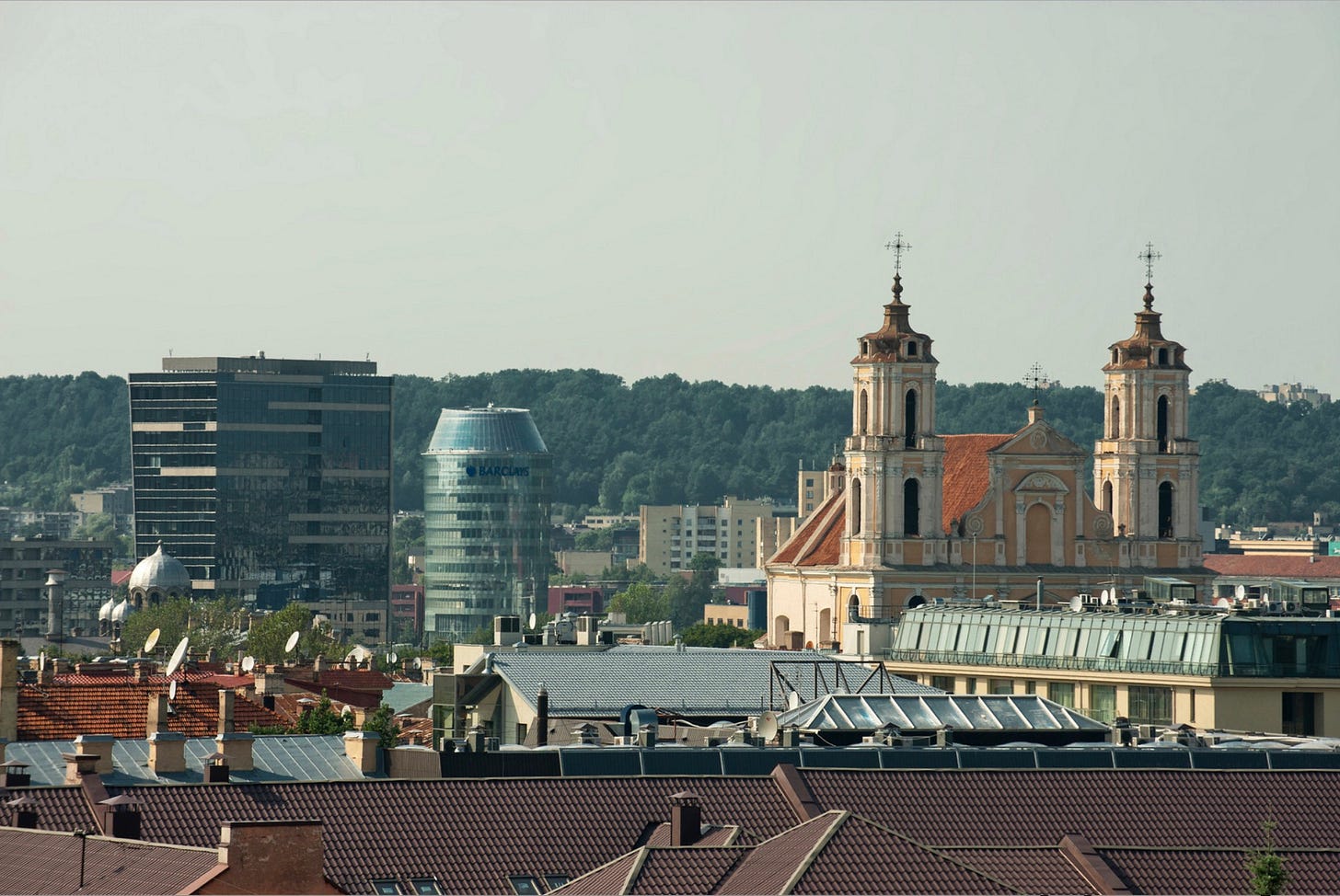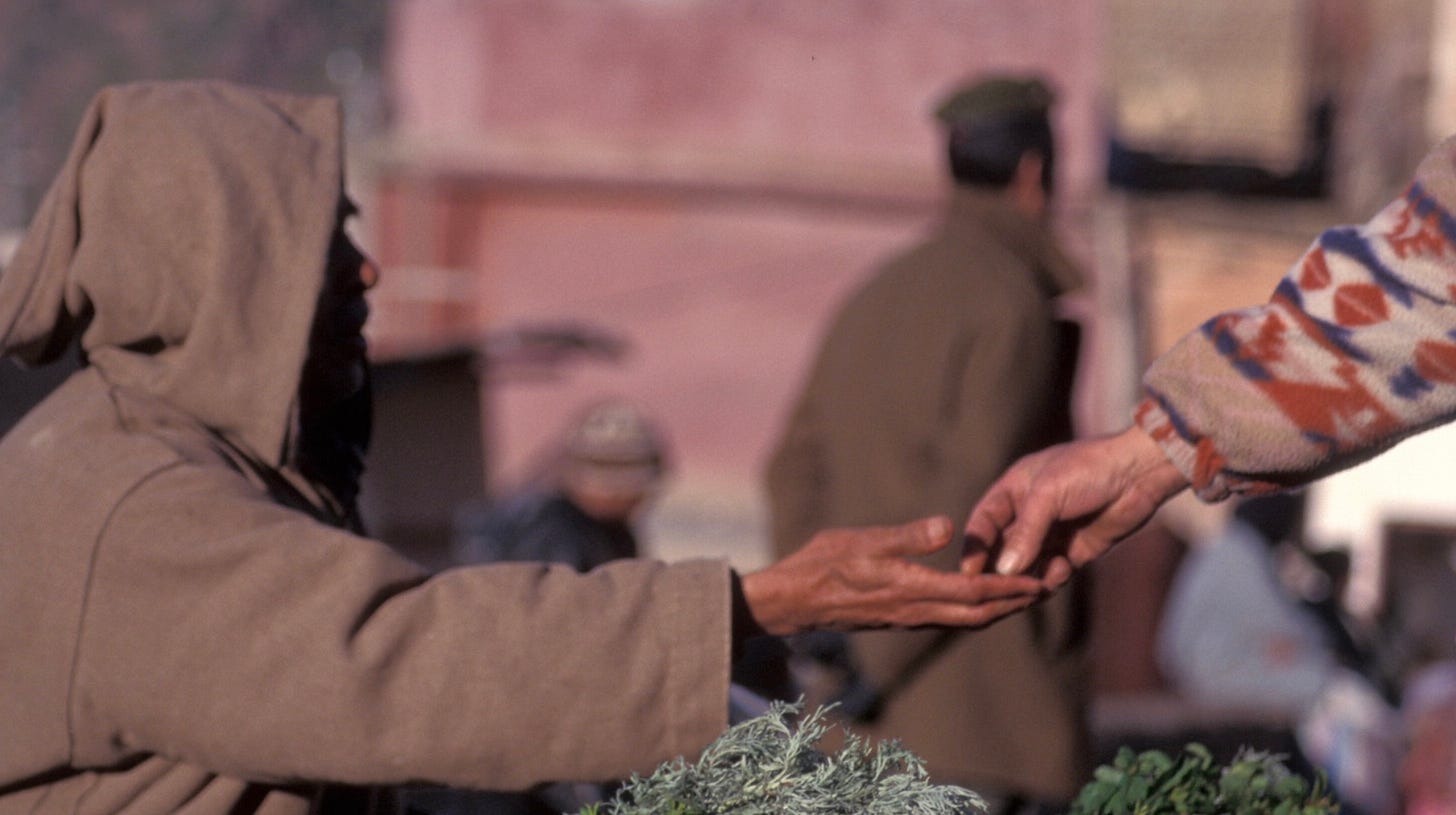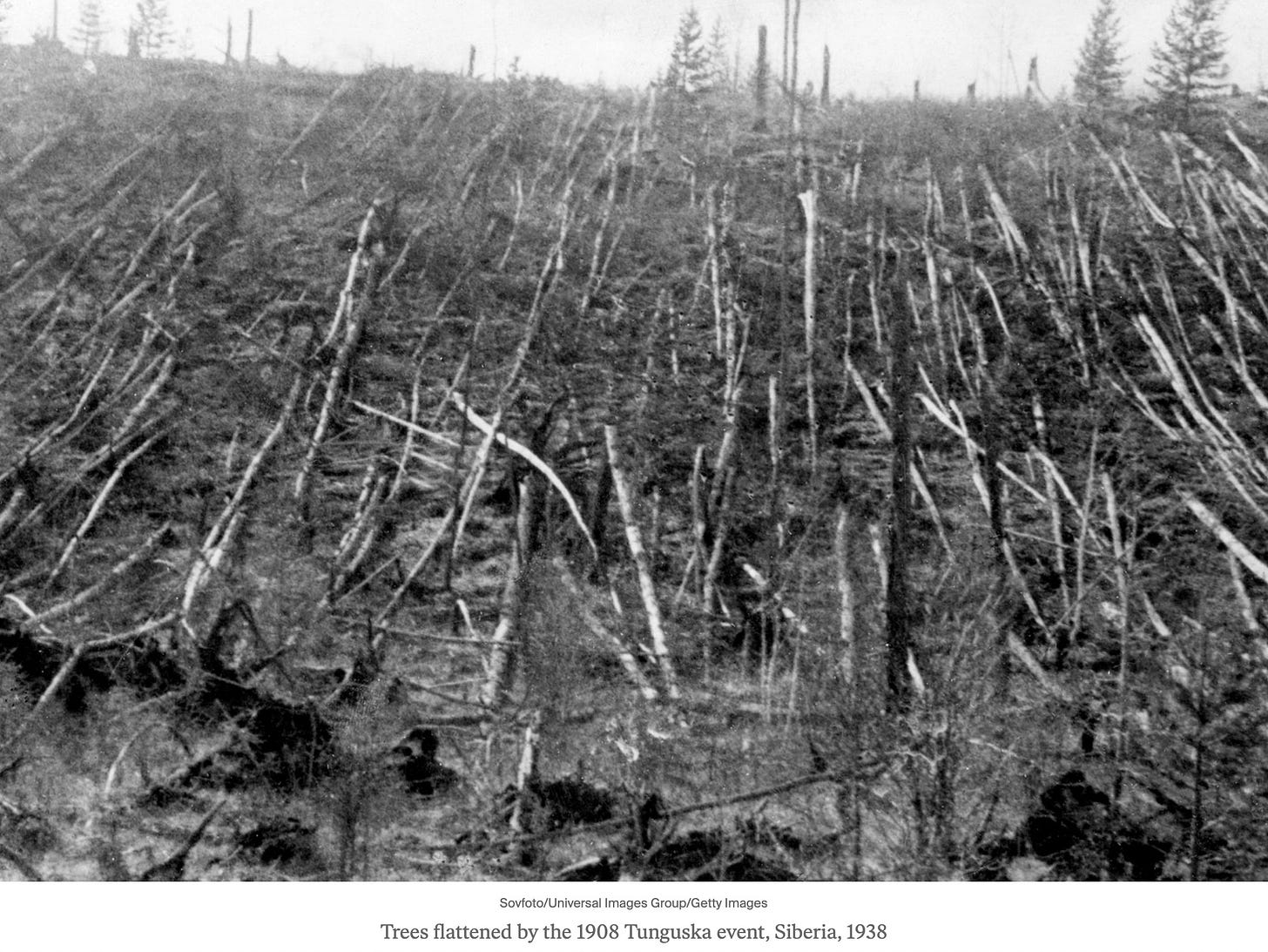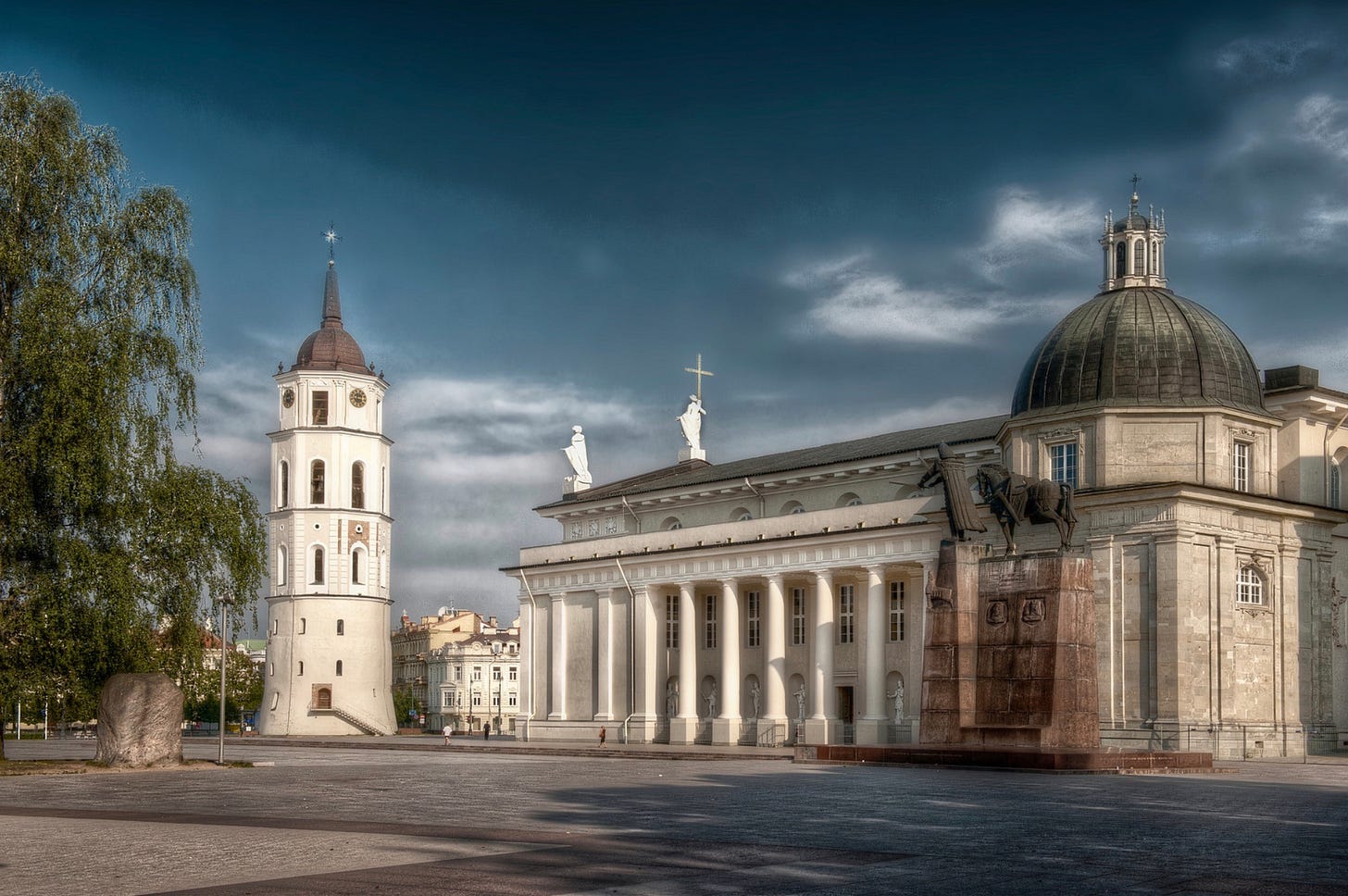On Fridays I suggest worthwhile weekend reading that’s guaranteed to improve your posture, your online dating prospects, and make you an all around better person. Read a dozen articles, lose five pounds.
First, our weekly photo quiz. Here are four photos from this country’s biggest city. First is the Roman Catholic cathedral, followed by the facade of the National Drama Theatre and couple of skyline views:
Can you name this country? The city? A final clue, it will spend more time in the spotlight next week than it has in decades. Give it a guess, and the answer is at the end of this post.
Please consider a subscription to Common Sense and Whiskey. Get CS&W straight to your inbox. Subscriptions start at the entirely reasonable price of free.
Now, a few suggestions for your weekend reading:
It’s known as l’appel du vide. The call of the void. Have you ever had that feeling? Just one perfectly normal day, you’re walking down the street and you cross over a bridge, or you look over the railings and you see the drop below. Completely within your wits, or you think you are, and all of a sudden you get that voice shouting in your head. “Jump!” it says. Why we Actually Want to Jump: The Call of the Void Explained
•
A long WSJ article not paywalled at the moment: the FSB unit believed responsible for strange incidents that blurred the lines between spycraft and harassment, including the mysterious death of a diplomat’s dog – Inside the Clandestine Russian Security Force That Took Evan Gershkovich
•
The Swedish island of Gotland is halfway between the Swedish mainland and Estonia. The government in Stockholm withdrew all military forces from the island in 2005. Leaving this trophy target undefended predictably attracted predators’ attention. Visits by muscly Russian men whose interests (put mildly) did not fit the usual tourist profile sparked alarm. “The Stockholm government’s approach now seems to be shut eyes, cross fingers, and hope that the Americans will sort it out.” Gotland: NATO’s Baltic Bastion
•
An unbroken blanket of coniferous trees occupies the North American coast from California to the Alaskan islands. A wonder of the natural world, these temperate rainforests are essential to the continent’s health. The Fight to Save North America’s Temperate Rainforests
•
Before there was Fleet Street, there was Grub Street – a real place as well as a metaphor. In the 17th century Grub Street , the real place, lay outside London’s city walls. From Grub Street to Fleet Street: The Development of the Early English Newspaper (At the top click “Transcript”)
•
Amid the privations of World War II, 36 men voluntarily starved themselves so that researchers and relief workers could learn about how to help people recover from starvation. The psychology of hunger. The Minnesota Starvation Experiment
•
Why did the University of Chicago became the leading bastion of free market economics?
“Scholars have proposed compelling explanations, from the strong rooting of “price theory” at Chicago by the end of the 1930s to the participation of many of its faculty members in postwar, pro-market advocacy groups that began to embrace neoliberalism by the 1960s. But having spent most of my adult life at the university and in its surrounding neighborhood of Hyde Park, I can’t help but wonder about a more quotidian contributing factor: the area’s limited range of commerce in the days when Milton Friedman, Friedrich Hayek, and George Stigler walked these streets. Hyde Park is on Chicago’s South Side, not the posh North.”
Why did Chicago become the headquarters of free market fundamentalism?
•
If you’re reading this as an email your provider may clip this post before the end. Try clicking on ‘view entire message’ to see the whole thing, or you can always read all content at Common Sense and Whiskey online.
•
Can humans live on Mars? The answer is startlingly simple. Can humans live in Antarctica, where the temperatures regularly fall below -50ºC (-60ºF) and it’s dark for six months of the year? Can humans live below the ocean, where pressure rapidly increases with depth to crushing levels? Can humans live in space, where there’s no air at all? So why not Mars? Thriving on Mars
•
A mysterious 1908 meteorite explosion became the object of widespread fascination and fear decades after it occurred. Fireball Over Siberia
•
On June 3 Mike Pence rode into Des Moines, Iowa, on a Harley Davidson, wearing blue jeans, cowboy boots, a black shirt, and a leather vest with patches that read “Pence” and “Rolling Thunders.” The most sycophantic figure in modern American politics was not just born again but also—who knew?—born to be wild. Unrepentant Pence
•
“We grew the Physarum on a plate, and the plate was sitting on a speaker, and my student was driving the speaker with her iPhone. And we could see that for certain types of music, it would grow quite differently than for others. Some of them, it grew very nicely. Some of them, it just didn’t grow at all. It just really hated it; it just hunkered down.”
Michael Levin is uncovering the incredible, latent abilities of living things. The Biologist Blowing Our Minds
•
In all bilaterally symmetrical animals, from humans down to simple worms, nerves cross from one side of the body to the opposite side of the brain. Geometry may explain why. Why the Brain’s Connections to the Body Are Crisscrossed
•••••
The answer to this week’s photo quiz is the host city next week for NATO’s 74th annual summit. It’s Vilnius, Lithuania. There are a few more photos in the Lithuania Gallery at EarthPhotos.com. We’ll talk more about the NATO summit in tomorrow’s week in review.
Happy weekend reading. See you then.
•
Please consider a subscription to Common Sense and Whiskey. Ask someone you know to join you? We’ll all have bookclub blogclub newsletter club together. Subscriptions start at free and through today they come with 50% off the pre-shipping price on every order from Earthphotos.com. Thanks.


